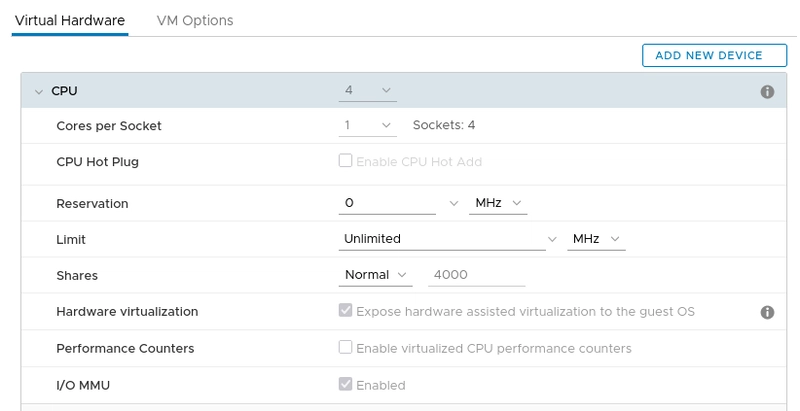From MVP to Masterpiece: Scaling Startups with Custom Software Development
In the dynamic world of startups, the journey from an idea to a thriving business often begins with an MVP—Minimum Viable Product. MVPs allow startups to test their ideas in the market quickly and with minimal investment. However, the road to sustained success lies in scaling beyond this basic prototype. This is where custom software development plays a pivotal role. Custom software development enables startups to create tailored solutions that address their unique challenges, align with their goals, and adapt to their growth trajectory. By transitioning from an MVP to robust, scalable software, startups can unlock new levels of efficiency, customer engagement, and innovation. In this blog, we explore the transformative power of custom software development in scaling startups, providing actionable insights, strategies, and real-world examples. 1. What is an MVP and Why is it Essential? An MVP, or Minimum Viable Product, serves as the foundation upon which many startups are built. It represents the initial version of a product, stripped down to include only the most essential functionalities needed to address the core problem it aims to solve. The concept of an MVP is rooted in agility, allowing startups to deliver value to their target audience without expending excessive resources or time on development. By focusing on a lean approach, startups are able to validate their ideas in a real-world setting swiftly, while keeping costs under control. The MVP serves multiple critical purposes for startups, enabling them to: Validate the Market Need: Before investing in full-scale development, startups use MVPs to test their product’s viability within their intended market. This approach helps determine whether their solution resonates with the target audience or requires adjustments to meet demand. Gather Valuable User Feedback: Feedback collected from early adopters provides direct insights into what works, what doesn’t, and how to improve the product moving forward. This iterative loop of feedback ensures the eventual solution aligns closely with user needs. Minimize Initial Development Costs: By building only the essential features, startups avoid overspending resources on unnecessary functionalities, allowing them to allocate budgets strategically. This cost-effective approach reduces financial risks associated with launching a new product. The Limitations of MVPs While MVPs are instrumental in kickstarting a startup's journey, they are not without their challenges and limitations. As a business begins to grow, these limitations become more evident, emphasizing the need to transition from MVPs to more sophisticated solutions. Common shortcomings of MVPs include: 1) Limited Functionality: By design, MVPs prioritize simplicity and core features, leaving out the advanced functionalities often required for broader adoption and customer satisfaction. This can lead to a lack of differentiation in competitive markets. 2) Scalability Issues: MVPs may falter under increased demand, as their architecture typically lacks the robustness needed for handling higher volumes of traffic or data. For example, a rapidly growing user base may experience performance lags or downtime. 3) Generic Design: With a focus on testing ideas rather than personalization, MVPs often offer a one-size-fits-all approach, which may fail to cater to the diverse expectations and preferences of a larger or more diverse audience. The Path Forward: Scaling Beyond MVPs Startups must recognize that while MVPs lay the groundwork for their success, they are not the end goal. As the business progresses, transitioning from MVPs to custom software solutions becomes essential to address growth challenges. 2. The Role of Custom Software in Scaling Startups Custom software development is the process of designing, creating, deploying, and maintaining software solutions that are specifically tailored to meet the unique requirements of a particular business or organization. Unlike off-the-shelf solutions, which offer generalized features and functionalities, custom software is built from the ground up to cater to a company’s specific goals, challenges, and operational needs. This bespoke approach ensures that the software aligns perfectly with the organization’s processes and strategies, making it a highly valuable asset, especially for startups aiming to scale. The Distinction Between Custom and Off-the-Shelf Solutions Off-the-shelf software, while often cost-effective initially, comes with significant limitations in terms of adaptability and scalability. These solutions are designed for a broad audience, which can result in inefficiencies for businesses with unique workflows or specialized needs. Custom software, on the other hand, provides a more holistic and precise solution. It is engineered with flexibility, scalability, and uniqueness in mind, offering startups the ability to d

In the dynamic world of startups, the journey from an idea to a thriving business often begins with an MVP—Minimum Viable Product. MVPs allow startups to test their ideas in the market quickly and with minimal investment. However, the road to sustained success lies in scaling beyond this basic prototype. This is where custom software development plays a pivotal role.
Custom software development enables startups to create tailored solutions that address their unique challenges, align with their goals, and adapt to their growth trajectory. By transitioning from an MVP to robust, scalable software, startups can unlock new levels of efficiency, customer engagement, and innovation.
In this blog, we explore the transformative power of custom software development in scaling startups, providing actionable insights, strategies, and real-world examples.
1. What is an MVP and Why is it Essential?
An MVP, or Minimum Viable Product, serves as the foundation upon which many startups are built. It represents the initial version of a product, stripped down to include only the most essential functionalities needed to address the core problem it aims to solve.
The concept of an MVP is rooted in agility, allowing startups to deliver value to their target audience without expending excessive resources or time on development. By focusing on a lean approach, startups are able to validate their ideas in a real-world setting swiftly, while keeping costs under control.
The MVP serves multiple critical purposes for startups, enabling them to:
Validate the Market Need: Before investing in full-scale development, startups use MVPs to test their product’s viability within their intended market. This approach helps determine whether their solution resonates with the target audience or requires adjustments to meet demand.
Gather Valuable User Feedback: Feedback collected from early adopters provides direct insights into what works, what doesn’t, and how to improve the product moving forward. This iterative loop of feedback ensures the eventual solution aligns closely with user needs.
Minimize Initial Development Costs: By building only the essential features, startups avoid overspending resources on unnecessary functionalities, allowing them to allocate budgets strategically. This cost-effective approach reduces financial risks associated with launching a new product.
The Limitations of MVPs
While MVPs are instrumental in kickstarting a startup's journey, they are not without their challenges and limitations. As a business begins to grow, these limitations become more evident, emphasizing the need to transition from MVPs to more sophisticated solutions.
Common shortcomings of MVPs include:
1) Limited Functionality: By design, MVPs prioritize simplicity and core features, leaving out the advanced functionalities often required for broader adoption and customer satisfaction. This can lead to a lack of differentiation in competitive markets.
2) Scalability Issues: MVPs may falter under increased demand, as their architecture typically lacks the robustness needed for handling higher volumes of traffic or data. For example, a rapidly growing user base may experience performance lags or downtime.
3) Generic Design: With a focus on testing ideas rather than personalization, MVPs often offer a one-size-fits-all approach, which may fail to cater to the diverse expectations and preferences of a larger or more diverse audience.
The Path Forward: Scaling Beyond MVPs
Startups must recognize that while MVPs lay the groundwork for their success, they are not the end goal. As the business progresses, transitioning from MVPs to custom software solutions becomes essential to address growth challenges.
2. The Role of Custom Software in Scaling Startups
Custom software development is the process of designing, creating, deploying, and maintaining software solutions that are specifically tailored to meet the unique requirements of a particular business or organization.
Unlike off-the-shelf solutions, which offer generalized features and functionalities, custom software is built from the ground up to cater to a company’s specific goals, challenges, and operational needs. This bespoke approach ensures that the software aligns perfectly with the organization’s processes and strategies, making it a highly valuable asset, especially for startups aiming to scale.
The Distinction Between Custom and Off-the-Shelf Solutions
Off-the-shelf software, while often cost-effective initially, comes with significant limitations in terms of adaptability and scalability. These solutions are designed for a broad audience, which can result in inefficiencies for businesses with unique workflows or specialized needs.
Custom software, on the other hand, provides a more holistic and precise solution. It is engineered with flexibility, scalability, and uniqueness in mind, offering startups the ability to differentiate themselves in the marketplace.
For startups, investing in custom software development service can mean the difference between stagnation and growth. As businesses expand, they require systems that can evolve alongside them, and this is where custom software excels. By addressing specific requirements and challenges, custom software serves as a foundation for innovation and long-term success.
Benefits of Custom Software Development
1. Scalability
Custom software is inherently designed to grow alongside a business. Startups often begin with a limited user base and a basic set of functionalities, but as their audience expands and their operations become more complex, the need for a scalable solution becomes evident. Custom software can accommodate increased traffic, handle larger datasets, and incorporate additional features seamlessly.
Example: A growing e-commerce startup may start with simple order management but later require capabilities like multi-warehouse inventory tracking, AI-driven product recommendations, and real-time analytics. Custom software ensures these features can be added without compromising performance.
2. Flexibility
Market conditions, customer preferences, and technological advancements are ever-changing. Startups need software that can adapt quickly to these shifts. Custom software allows for ongoing modifications and upgrades, enabling businesses to remain agile and competitive.
Example: A ride-sharing startup might initially offer basic ride-booking features but later decide to add carpooling options, subscription plans, or sustainability tracking. Custom software provides the flexibility to integrate these changes efficiently.
3. Integration
Startups often rely on a mix of tools and systems, from CRMs and ERPs (Like Odoo Consulting) to marketing automation platforms. Custom software is designed to integrate seamlessly with these existing systems, fostering a cohesive digital ecosystem that enhances productivity and reduces manual efforts.
Example: A logistics startup might integrate its custom software with third-party APIs for real-time shipment tracking, warehouse management systems, and invoicing tools, streamlining operations end-to-end.
4. Personalization
In today’s highly competitive landscape, providing personalized experiences has become a key differentiator. Custom software allows startups to create tailored user interfaces and experiences that resonate with their specific audience. This not only improves customer satisfaction but also fosters brand loyalty.
Example: A healthtech startup could use custom software to deliver personalized wellness recommendations, track patient progress over time, and offer multilingual support for a diverse customer base.
Real-World Impact
The transformative potential of custom software development becomes evident when examining real-world examples. Consider a food delivery startup that began with a simple MVP, offering basic functionalities such as order placement and delivery tracking. While the MVP served its purpose in testing the market and gaining initial traction, it quickly became apparent that the startup needed more advanced capabilities to scale.
Through custom software development, the startup was able to implement features that revolutionized its operations and customer experience:
1) AI-Powered Route Optimization: By leveraging artificial intelligence, the company optimized delivery routes in real-time, reducing delays, fuel consumption, and costs.
2) Multiple Payment Options: The integration of diverse payment gateways—including credit cards, digital wallets, and international payment systems—made the platform more accessible to a wider audience.
3) Loyalty Rewards System: A tailored rewards program encouraged repeat orders, increasing customer retention and enhancing the overall value proposition.
These enhancements not only addressed the growing demands of the user base but also positioned the startup as a market leader in its industry. The case underscores the pivotal role custom software development plays in enabling startups to scale effectively, meet customer expectations, and achieve sustainable growth.
3. Key Components of Scalable Custom Software
Modular Architecture
Building custom software with a modular architecture allows startups to scale seamlessly. Modular systems enable developers to add or modify components without disrupting the existing structure. This flexibility is essential as a startup's requirements evolve over time.
Example: A fintech startup can start with core functionalities like payment processing and later integrate additional features like fraud detection or financial analytics.
Robust Database Management
Efficient database management is a cornerstone of scalable custom software. Startups often deal with growing volumes of user data, transactions, and logs. Custom software ensures that databases are optimized for speed and reliability.
Key Practices:
- Implementing indexing and partitioning for large datasets.
- Using NoSQL databases for unstructured data.
- Employing database replication to prevent downtime.
Cloud Integration
Cloud computing has revolutionized the way software scales. Custom software that leverages cloud platforms benefits from elasticity, allowing startups to handle spikes in demand without significant infrastructure investments.
Benefits:
- Cost-effective scalability with pay-as-you-go models.
- Geographic redundancy for improved reliability.
- Seamless deployment of updates and new features.
Cybersecurity
As startups scale, the risk of cyberattacks increases. Custom software development incorporates robust security measures from the outset, ensuring data integrity and user trust.
Security Measures:
- End-to-end encryption for data protection.
- Regular vulnerability assessments and updates.
- Compliance with industry standards and regulations.
4. Strategies for Developing Scalable Custom Software
Analyzing Business Goals and Audience Needs
Understanding the startup's long-term vision and target audience is crucial. Custom software should align with the company's goals while addressing specific user pain points.
Example: An e-commerce startup targeting young, tech-savvy customers may prioritize features like AI-driven product recommendations and a seamless mobile shopping experience.
Collaboration Between Stakeholders
Effective communication between development teams, stakeholders, and end-users ensures that the software meets expectations and delivers value.
Approach:
Regular meetings to align on progress and priorities.
User feedback loops to refine functionalities.
Transparent reporting on development milestones.
Incorporating DevOps Practices
DevOps accelerates the software development lifecycle by integrating development and operations teams. This approach ensures faster deployment and better-quality software.
Key Practices:
Continuous integration and continuous deployment (CI/CD).
Automated testing for early detection of bugs.
Infrastructure as code (IaC) for consistent environments.
Iterative Development and Continuous Improvement
Custom software development is an ongoing process. Iterative development allows startups to release features incrementally, gather feedback, and make improvements.
Benefits:
- Reduced time-to-market for new features.
- Enhanced user satisfaction with quick fixes.
- Adaptability to changing market conditions.
5. Real-Life Success Stories
Case Study 1: A SaaS Startup Revolutionizing Collaboration
A SaaS startup began with an MVP offering basic team collaboration tools. As their user base grew, they leveraged custom software development to add advanced features like video conferencing, AI-driven task management, and third-party integrations. This scalability allowed them to compete with established players in the market.
Case Study 2: A Healthtech Startup's Journey to Success
A healthtech startup initially launched with an MVP focusing on telemedicine. Using custom software, they scaled their platform to include features like electronic health record (EHR) integration, AI-powered diagnostic tools, and multilingual support. Today, they serve patients across multiple continents.
6. Common Pitfalls to Avoid
Scaling software is a crucial step for startups aiming to transition from MVPs to robust solutions, but it is not without challenges. Several common pitfalls can derail the process if not addressed thoughtfully.
Here’s a deeper dive into these issues and actionable strategies to overcome them:
1. Overcomplicating the Software Architecture
While modular architecture is fundamental for scalability, there’s a fine line between building a flexible system and over engineering it. Overcomplicated software architectures often become difficult to manage, leading to increased development time, higher costs, and unnecessary complexity in maintenance.
Excessive layers of abstraction, redundant components, or adding features that may never be utilized can bog down the software, making it harder to implement changes or scale efficiently.
Why It Happens: Startups often anticipate future requirements and try to "future-proof" their software by adding too many layers of functionality, even if they’re not immediately needed. This approach can backfire, as bloated architectures slow down operations and overwhelm teams.
Solution: Focus on simplicity and adopt the principle of "building for today, scaling for tomorrow." Prioritize features that directly align with current business goals and user needs. Use modular designs that allow for incremental additions and improvements rather than pre-emptively adding unnecessary elements. Regular audits of the software architecture can also help streamline complexity.
2. Ignoring Scalability in the Early Development Phase
Startups that treat scalability as an afterthought during the initial stages of development often encounter significant roadblocks down the line. Software not designed with scalability in mind may fail to accommodate increased traffic, larger datasets, or expanded functionalities as the user base grows. This often results in poor performance, downtime, or the need for costly overhauls.
Why It Happens: In the rush to launch, many startups focus on delivering a functional product (MVP) as quickly as possible and overlook the long-term requirements of the software.
Solution: Partner with developers who have expertise in scalable software design to ensure future growth is accounted for from the beginning. Adopt modern technologies such as cloud-based solutions that offer elasticity, allowing the system to handle varying loads without additional infrastructure. Incorporating microservices architecture can also enable individual components to scale independently, reducing bottlenecks and improving system performance.
3. Underestimating User Feedback
Ignoring or underutilizing user feedback is a mistake that can hinder the effectiveness of scaling efforts. Without incorporating feedback, startups risk developing features that don’t align with user expectations or overlook critical pain points that affect user experience. This disconnect often leads to wasted resources and reduced customer satisfaction.
Why It Happens: Startups sometimes assume they know what their users want or rely solely on internal perspectives, rather than involving the actual end-users in the development process.
Solution: Establish feedback loops that actively involve users throughout the development lifecycle. Conduct regular surveys, usability testing, and analyze user behavior data to gain insights into what features and improvements are most valuable. Listening to your audience not only helps refine the software but also builds trust and loyalty among users.
4. Rushing the Development Process
Scaling software is a marathon, not a sprint. In the race to expand functionalities or address user demands, startups may rush through the development process, which can lead to inadequate planning, buggy code, and poorly implemented features. Hastily developed systems often lack the robustness required to support long-term growth, resulting in performance issues and technical debt.
Why It Happens: Pressure from stakeholders, tight deadlines, or competition in the market can push startups to prioritize speed over quality during software development.
Solution: Embrace agile development methodologies that emphasize iterative progress, thorough testing, and continuous improvement. Agile processes break down development into manageable sprints, allowing teams to focus on delivering high-quality features incrementally. Allocate time for comprehensive testing at every stage to identify and resolve potential issues before deployment. Proper planning and realistic timelines also ensure that the software is built with both quality and scalability in mind.
7. Future Trends in Custom Software for Startups
As technology continues to evolve rapidly, startups must stay ahead by leveraging innovative tools and practices in custom software development. The future holds a wealth of opportunities for startups to harness emerging trends and gain a competitive edge.
Here are some key trends shaping the future of custom software development for startups:
1. AI-Driven Personalization
Artificial Intelligence (AI) and Machine Learning (ML) are no longer just buzzwords—they are revolutionizing how businesses interact with their customers. AI-driven personalization allows software to adapt in real time to individual user preferences, behaviors, and needs. By analyzing vast amounts of data, AI systems can deliver hyper-personalized experiences, tailoring content, recommendations, and services to each user.
Applications Across Industries: In e-commerce, AI can recommend products based on user browsing history and preferences. In healthcare, it can offer personalized treatment suggestions or reminders for medication adherence.
Future Potential: As AI and ML algorithms become more sophisticated, startups can integrate predictive analytics to anticipate customer needs before they arise, further enhancing user satisfaction and loyalty.
2. Edge Computing
The rise of edge computing is transforming how data is processed and utilized. Unlike traditional cloud computing, where data is processed in centralized data centers, edge computing processes data closer to its source, such as on local devices or servers.
This approach significantly reduces latency, enabling faster and more efficient operations.
Benefits for Startups: For startups focused on industries like IoT, autonomous vehicles, or smart cities, edge computing offers real-time processing capabilities that are critical for seamless functionality. It also reduces dependency on internet connectivity, ensuring better performance even in remote or low-bandwidth areas.
Future Growth: As edge computing integrates further with 5G technology, startups can build ultra-responsive applications that enhance user experiences and expand service accessibility.
3. Sustainability in Software Development
The global shift toward sustainability is influencing all industries, and software development is no exception. Startups are increasingly adopting green coding practices to create energy-efficient software that minimizes environmental impact.
Eco-Friendly Practices: These include optimizing algorithms to reduce energy consumption, developing software that runs effectively on low-power devices, and leveraging renewable energy-powered data centers.
Startups’ Role: By prioritizing sustainability, startups can appeal to environmentally conscious consumers and position themselves as socially responsible brands. This trend aligns with the growing demand for corporate responsibility and sustainable innovation.
Long-Term Impact: Green software development has the potential to lower operational costs while contributing positively to global sustainability efforts.
4. Decentralized Applications (dApps)
Blockchain technology is ushering in a new era of decentralized applications (dApps), which prioritize transparency, security, and user ownership. Unlike traditional applications, dApps operate on decentralized networks, eliminating the need for intermediaries and providing greater control to users.
**Advantages of dApps: **They offer enhanced security through cryptographic protocols, greater data privacy, and improved resistance to single points of failure. These characteristics make dApps highly appealing for sectors like finance, supply chain, and healthcare.
Opportunities for Startups: Startups leveraging dApps can create disruptive solutions, such as decentralized finance (DeFi) platforms, supply chain tracking systems, or transparent voting mechanisms. By integrating blockchain into their custom software, startups can build trust and innovation into their offerings.
Looking Ahead: As blockchain technology matures, dApps are expected to evolve further, opening new possibilities for startups to create secure, transparent, and user-driven ecosystems.
8. Conclusion
Scaling a startup from an MVP to a robust, scalable solution requires more than just technical expertise—it demands a strategic vision. Custom software development acts as the cornerstone of this transformation, enabling startups to overcome limitations, meet user expectations, and adapt to changing market dynamics.
By investing in scalable, flexible, and secure custom software, startups can lay the foundation for long-term success. Whether it’s leveraging cloud computing for cost-effective scaling, integrating AI for personalization, or adopting sustainable development practices, the potential of custom software is boundless.
For startups ready to embark on this journey, partnering with a reliable custom software development service is the first step. Tailored solutions ensure that your software evolves with your business, paving the way from MVP to masterpiece.









































































































































































![[The AI Show Episode 142]: ChatGPT’s New Image Generator, Studio Ghibli Craze and Backlash, Gemini 2.5, OpenAI Academy, 4o Updates, Vibe Marketing & xAI Acquires X](https://www.marketingaiinstitute.com/hubfs/ep%20142%20cover.png)



























































































































![[DEALS] The Premium Learn to Code Certification Bundle (97% off) & Other Deals Up To 98% Off – Offers End Soon!](https://www.javacodegeeks.com/wp-content/uploads/2012/12/jcg-logo.jpg)


![From drop-out to software architect with Jason Lengstorf [Podcast #167]](https://cdn.hashnode.com/res/hashnode/image/upload/v1743796461357/f3d19cd7-e6f5-4d7c-8bfc-eb974bc8da68.png?#)






































































































.png?#)




.jpg?#)
































_Christophe_Coat_Alamy.jpg?#)
 (1).webp?#)









































































































![Rapidus in Talks With Apple as It Accelerates Toward 2nm Chip Production [Report]](https://www.iclarified.com/images/news/96937/96937/96937-640.jpg)









































































































































